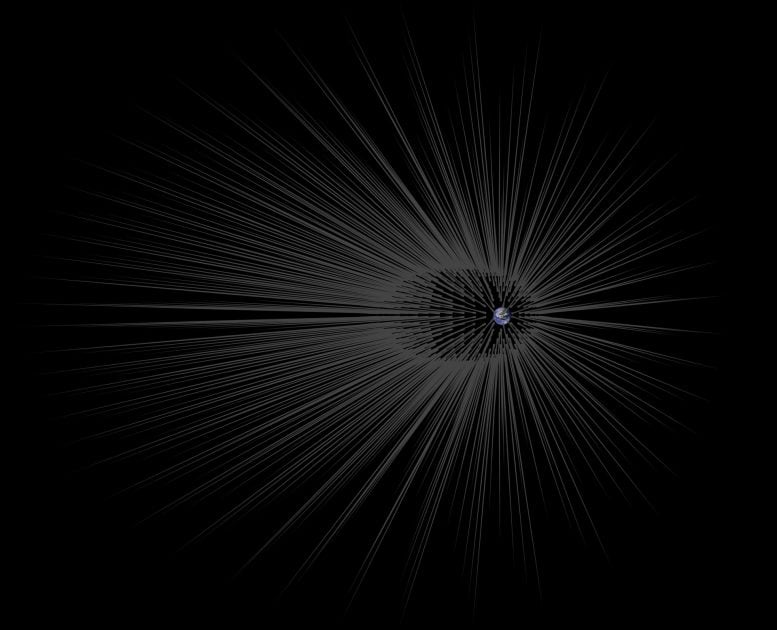
This illustration shows Earth surrounded by filaments of dark matter called “hairs.” The hairs in this illustration are not to scale. Simulations show that the roots of such hairs can be 600,000 miles (1 million kilometers) from Earth, while Earth’s radius is only about 4,000 miles (6,400 kilometers). Credit: NASA/JPL-Caltech
A new study proposes the existence of long filaments of dark matter, called “hairs,” which are created when a stream of dark matter particles goes through a planet. According to simulations, the hair is densest at a point called the “root.” When particles of a dark matter stream pass through the core of Earth, they form a hair whose root has a particle density about a billion times greater than average.
Dark matter is an invisible, mysterious substance that makes up about 27 percent of all matter and energy in the universe. The regular matter, which makes up everything we can see around us, is only 5 percent of the universe. The rest is dark energy, a strange phenomenon associated with the acceleration of our expanding universe.
Neither dark matter nor dark energy has ever been directly detected, although many experiments are trying to unlock the mysteries of dark matter, whether from deep underground or in space.
Based on many observations of its gravitational pull in action, scientists are certain that dark matter exists, and have measured how much of it there is in the universe to an accuracy of better than one percent. The leading theory is that dark matter is “cold,” meaning it doesn’t move around much, and it is “dark” insofar as it doesn’t produce or interact with light.
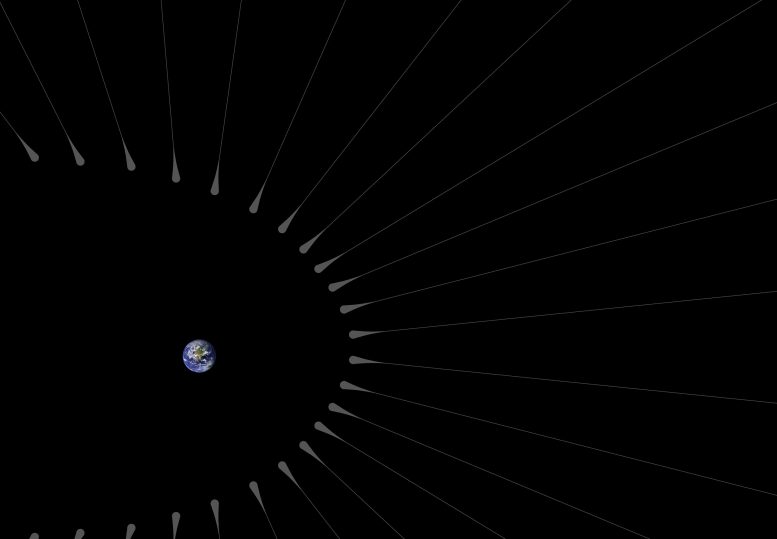
This artist’s rendering zooms in on what dark matter “hairs” might look like around Earth. Credit: NASA/JPL-Caltech
Galaxies, which contain stars made of ordinary matter, form because of fluctuations in the density of dark matter. Gravity acts as the glue that holds both the ordinary and dark matter together in galaxies.
According to calculations done in the 1990s and simulations performed in the last decade, dark matter forms “fine-grained streams” of particles that move at the same velocity and orbit galaxies such as ours.
“A stream can be much larger than the solar system itself, and there are many different streams crisscrossing our galactic neighborhood,” Prézeau said.
Prézeau likens the formation of fine-grained streams of dark matter to mixing chocolate and vanilla ice cream. Swirl a scoop of each together a few times and you get a mixed pattern, but you can still see the individual colors.
“When gravity interacts with the cold dark matter gas during galaxy formation, all particles within a stream continue traveling at the same velocity,” Prézeau said.
But what happens when one of these streams approaches a planet such as Earth? Prézeau used computer simulations to find out.
His analysis finds that when a dark matter stream goes through a planet, the stream particles focus into an ultra-dense filament, or “hair,” of dark matter. In fact, there should be many such hairs sprouting from Earth.
A stream of ordinary matter would not go through Earth and out the other side. But from the point of view of dark matter, Earth is no obstacle. According to Prézeau’s simulations, Earth’s gravity would focus and bend the stream of dark matter particles into a narrow, dense hair.
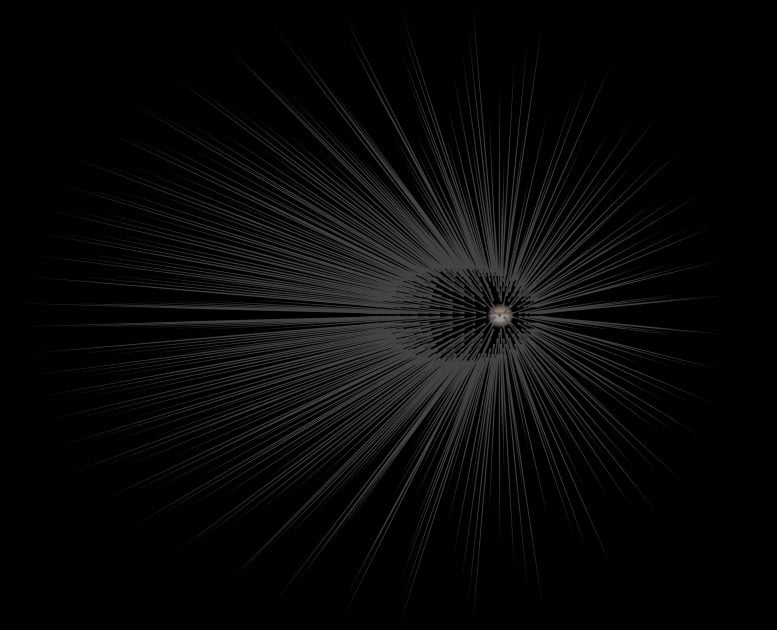
The root of a dark matter hair produced from particles going through Jupiter’s core would be about 1 trillion times denser than average. Credit: NASA/JPL-Caltech
Hairs emerging from planets have both “roots,” the densest concentration of dark matter particles in the hair, and “tips,” where the hair ends. When particles of a dark matter stream pass through Earth’s core, they focus at the “root” of a hair, where the density of the particles is about a billion times more than average. The root of such a hair should be around 600,000 miles (1 million kilometers) away from the surface, or twice as far as the moon. The stream particles that graze Earth’s surface will form the tip of the hair, about twice as far from Earth as the hair’s root.
“If we could pinpoint the location of the root of these hairs, we could potentially send a probe there and get a bonanza of data about dark matter,” Prézeau said.
A stream passing through Jupiter’s core would produce even denser roots: almost 1 trillion times denser than the original stream, according to Prézeau’s simulations.
“Dark matter has eluded all attempts at direct detection for over 30 years. The roots of dark matter hairs would be an attractive place to look, given how dense they are thought to be,” said Charles Lawrence, chief scientist for JPL’s astronomy, physics and technology directorate.
Another fascinating finding from these computer simulations is that the changes in density found inside our planet – from the inner core, to the outer core, to the mantle to the crust – would be reflected in the hairs. The hairs would have “kinks” in them that correspond to the transitions between the different layers of Earth.
Theoretically, if it were possible to obtain this information, scientists could use hairs of cold dark matter to map out the layers of any planetary body, and even infer the depths of oceans on icy moons.
Further study is needed to support these findings and unlock the mysteries of the nature of dark matter.
Reference: “Dense Dark Matter Hairs Spreading Out from Earth, Jupiter and Other Compact Bodies” by Gary Prezeau, 25 November 2015, The Astrophysical Journal.
DOI: 10.1088/0004-637X/814/2/122
arXiv:1507.07009

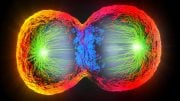




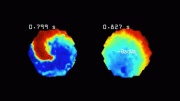


We know that our Universe consists of 96% of Dark Matter and only 4% of light matter. Further Dark Matter is not homogeneous throughout the Universe but only heterogeneous. We have clumps of Dark Matter here and there which are dense enough to split the light of visible galaxies on its path into a kaleidoscopic effect producing gravitational lensing. Moreover, the recent article states that our neighboring galaxy Triangulum consists of just about 1000 stars whereas its mass may exceed that of a billion stars. What happened to the missing mass? Clearly, it exists in the form of ‘Dark Matter’ which is very dense inside the galaxy. The Dark Matter clumps only drive the nearby galaxies at a fantastic speed nearing the velocity of light and that accounts for expanding universe. Even our Milky Way Galaxy spirals are kept away from crumbling by the quantity of Dark Matter at its center. I assume that even the Sun and other stars core should contain sufficient Dark Matter to keep the sun without collapsing until it spends out all the helium in atomic fusion reactor what it is. The same logic holds good for the Black Holes which keeps the collapsing stars into it. Black Holes are thin and thick throughout the universe. In this article it is found to be hairy. Dark Matter should be able to convert to light matter and the exact energy matter equation is not known. The vacuum energy of the Universe is very high and contribution by Dark Energy is responsible for that. There is no absolute vacuum in the universe. The candidate for the Dark Matter could be neutrinos and Higgs Bosons which are transparent and all permeating but still massive. Please read the article written by me which can be got by googling as vcmadan2. Dark Matter can never be dispensed with and it can never be replaced by any other theory. Dark Matter is the real substance massive and it should be possible to convert itself into the light matter at all cost. The death of the light matter should go as Dark Matter. Even in multiverse theory, the concept of Dark Matter holds good since it will always keep the other universes at a distance not to be observed by us. Big Bang theory states that all the universe started from a dot. Since Dark Matter can assume various densities being bosonic, we can think that spark of very dense dark matter could be responsible for the creation of Universe. These are all the possibilities to be explored by the future scientific community. Thank You.